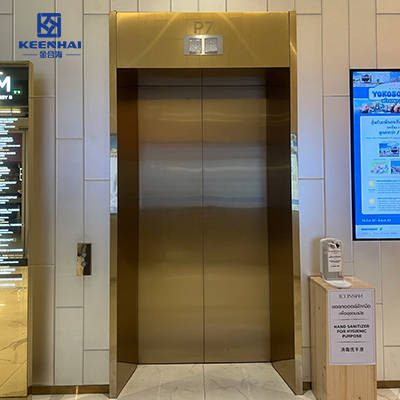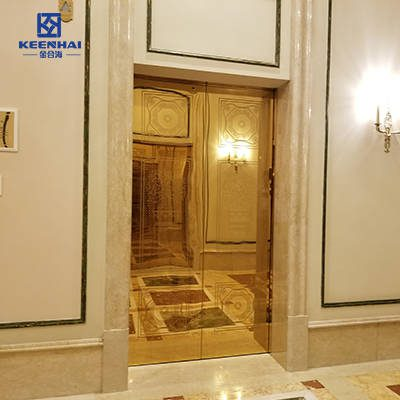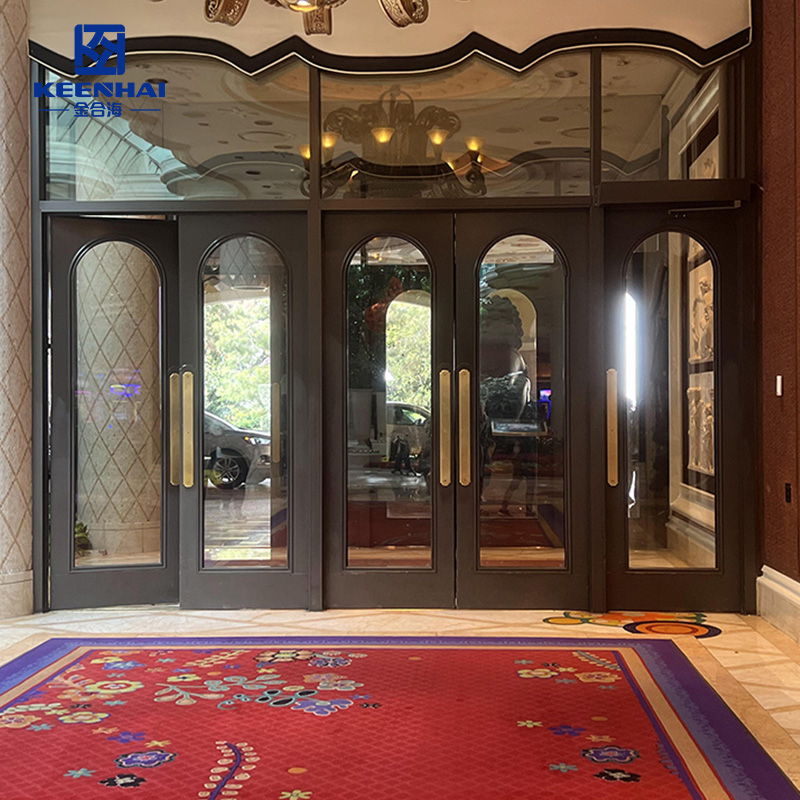Installing stainless steel elevator doors requires precise pre-measurement, proper tool setup, and careful panel alignment. Typical installation costs range from $2,800 to $6,500 per set, depending on material grade, finish type, and automatic or manual operation. Buildings with high traffic or multi-panel configurations often need 12–18 hours of labor, emphasizing the importance of pre-planning and organized workflow.
1. Pre-Installation Preparation
Proper preparation before installing stainless steel elevator doors is crucial to ensure smooth alignment, long-term performance, and minimal installation issues. High-traffic commercial buildings and residential projects demand precise measurements, the right door selection, and organized tools to prevent costly delays.
1.1 Measuring Door Opening and Shaft Dimensions
-
Measure the shaft width and height at three points—top, middle, and bottom—to ensure the door frame fits perfectly. Variations of more than ±3 mm require adjustments.
-
Check depth and clearance inside the shaft for automatic or heavy doors; misalignment can cause operational failure or excessive wear.
-
Document dimensions carefully and cross-check with the door manufacturer’s specifications.
Always account for frame thickness and finishing panels when measuring. For instance, a modern office building in Chicago installed stainless steel lift doors; precise pre-measurement reduced on-site modifications by over 70%.
1.2 Selecting the Right Stainless Steel Elevator Door Model
Choosing the right model affects both functionality and durability:
-
Material Grade: 304 stainless steel suits most residential and commercial projects, while 316 offers superior corrosion resistance in coastal or humid areas.
-
Finish Type: Hairline, mirror, or PVD-coated options allow integration with interiors. PVD finishes also resist fingerprints and wear better.
-
Door Type: Sliding, center-opening, or side-opening depends on shaft width and building traffic.
| அம்சம் | Residential Use | Commercial/High-Traffic | Notes |
|---|---|---|---|
| பொருள் | 304 SS | 316 SS | Coastal/humid areas require 316 for longevity |
| Finish | Hairline/Mirror | PVD-coated preferred | Reduces visible scratches and fingerprints |
| Door Operation | Manual/Automatic | Automatic recommended | Heavy traffic favors automated systems |
Example: A New York high-rise opted for துருப்பிடிக்காத எஃகு லிஃப்ட் நுழைவாயில்கள் with PVD finishes to match lobby aesthetics while ensuring doors withstand over 1,000 daily uses.
1.3 Required Tools and Materials
Before starting installation, organize tools and materials to avoid delays:
-
Basic Tools: Tape measure, spirit level, plumb line, screwdriver set, drill with masonry bits.
-
Specialized Tools: Hoisting equipment for heavy doors, torque wrench for precise panel alignment, polishing pads for finishing.
-
Materials: Anchors, mounting brackets, shims, lubricants, cleaning cloths, and optional protective film for pre-install handling.
Keep all tools within reach and pre-assemble small components like door guides and rollers to streamline the installation. For example, a commercial lobby in San Francisco reduced installation time by 30% by staging all லிஃப்ட் கதவு components on-site before lifting.
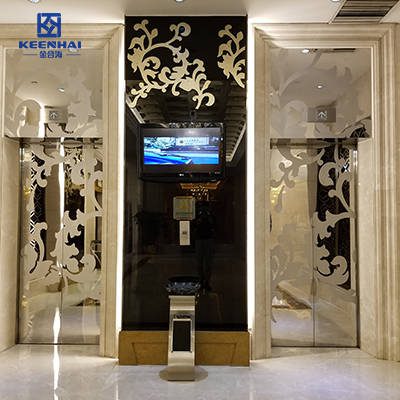
2. Installation Steps
Installing stainless steel elevator doors correctly ensures smooth operation, long-term durability, and minimal maintenance. Proper sequencing and attention to detail prevent misalignment, operational failures, and costly on-site corrections.
2.1 Removing Existing Doors and Frames
-
Power Off and Secure the Elevator: Ensure the elevator is out of service, and lock access to prevent accidents.
-
Detach Door Panels Carefully: For glass or old metal doors, use protective padding to avoid scratches or cracks.
-
Remove Old Frame and Hardware: Loosen mounting bolts, remove shims, and carefully extract the frame. Inspect the shaft for damage or corrosion before proceeding.
Example: A hotel in Boston removed outdated aluminum doors, documenting frame positions to guide the installation of stainless steel lift doors without affecting the existing elevator cab alignment.
2.2 Aligning and Mounting the Door Frame
-
Place the New Frame: Use a hoist or team lift to position the stainless steel frame inside the shaft.
-
Level and Plumb: Check vertical and horizontal alignment using a spirit level and laser plumb. Misalignment over ±2 mm can cause operational issues.
-
Secure the Frame: Insert anchors and bolts gradually, rechecking alignment after each step. Tighten to manufacturer torque specifications.
Pre-drilled holes on துருப்பிடிக்காத எஃகு லிஃப்ட் நுழைவாயில்கள் frames help reduce adjustment time by 40%.
2.3 Installing the Door Panels and Mechanisms
-
Attach Door Panels: Slide the panels into the guide rails carefully. Avoid forcing panels to prevent scratches.
-
Install Rollers and Tracks: Lubricate moving parts with non-corrosive lubricant to ensure smooth operation.
-
Connect Automatic Mechanisms: If installing automatic doors, connect motor drives, sensors, and control panels according to manufacturer instructions.
-
Check Clearances: Ensure 2–3 mm clearance on all sides to prevent binding and rubbing.
| Step | Recommended Action | Notes |
|---|---|---|
| Panel Placement | Align and slide into tracks | Avoid forcing; check top & bottom alignment |
| Rollers & Tracks | Lubricate & tighten | Reduces noise and wear |
| Motor & Sensors | Connect per manual | Test manually before power-on |
Example: In a 20-story residential building, careful pre-lubrication and panel alignment allowed technicians to install லிஃப்ட் கதவு sets 25% faster than projected, with zero on-site damage.
2.4 Testing Door Operation and Adjustments
-
Manual Test: Open and close each door manually to ensure smooth sliding without obstructions.
-
Automatic Test: Activate motorized operation, check sensors, and confirm correct stopping points.
-
Adjustments: Fine-tune rollers, tracks, and frame alignment. Minor adjustments of ±1–2 mm can resolve most operational issues.
-
Final Inspection: Verify that doors close flush with the shaft wall, operate quietly, and meet manufacturer safety tolerances.
Record all alignment measurements for future maintenance and troubleshooting. Buildings with high daily traffic benefit from this documentation, reducing downtime and repair costs for stainless steel elevator doors.
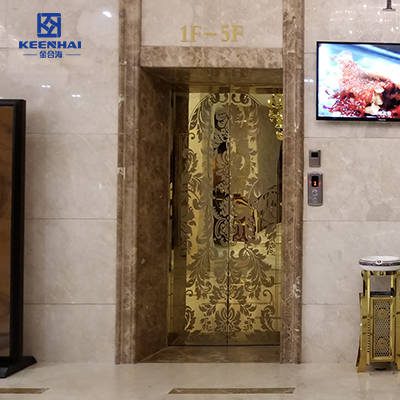
3. Cost and Time Considerations
Understanding the cost and time implications of installing stainless steel elevator doors helps building managers budget accurately and schedule work efficiently. Both material choice and building type significantly impact overall expenses and labor requirements.
3.1 Average Installation Costs
-
Material Costs: Stainless steel elevator doors range from $2,800 to $6,500 per set, depending on grade (304 vs 316), finish (hairline, mirror, PVD-coated), and panel size.
-
Hardware and Mechanisms: Additional costs include rollers, tracks, mounting brackets, and automatic door motors, averaging $500–$1,200 per installation.
-
Miscellaneous Expenses: Anchors, shims, protective films, and lubricants may add $100–$300 per door set.
Example: A 15-story commercial building in Chicago spent $4,200 on mirror-finished 304 stainless steel doors, including automatic mechanisms, with minimal material waste due to precise pre-installation measurements.
3.2 Labor Time Estimates for Different Building Types
Labor requirements vary depending on building height, door type, and traffic:
| Building Type | Door Type | Average Labor Time | Notes |
|---|---|---|---|
| Residential low-rise | Manual single-slide | 4–6 hours | Fewer panels, simpler alignment |
| Commercial mid-rise | Automatic double-slide | 8–12 hours | Motor and sensor installation adds complexity |
| High-rise tower | Automatic multi-panel | 12–18 hours | Hoisting and alignment require teamwork and precision |
Pre-staging all components and ensuring accurate shaft measurements can reduce installation time by 20–30%, especially for high-rise projects.
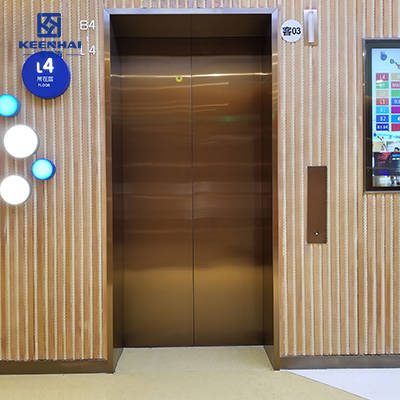
4. Maintenance After Installation
Proper maintenance ensures that stainless steel elevator doors continue operating smoothly, retain their aesthetic appeal, and avoid costly repairs. Routine care prevents common issues like misalignment, squeaking, and corrosion over time.
4.1 Cleaning and Lubrication Tips
-
Surface Cleaning: Wipe stainless steel panels weekly with a soft microfiber cloth and mild detergent. Avoid abrasive cleaners that can scratch the finish. For PVD-coated doors, use only non-abrasive, pH-neutral solutions.
-
Track and Roller Lubrication: Apply non-corrosive lubricant to rollers, guides, and hinges monthly to reduce friction and noise. Avoid over-lubrication, which can attract dust and cause jamming.
-
Inspection: Check door panels, edges, and frames for scratches, dents, or loose bolts during each cleaning session. Early detection prevents larger repairs.
Example: A commercial building in Los Angeles noticed reduced noise and smoother automatic operation after switching to stainless steel lift doors with monthly roller lubrication and quarterly PVD surface care.
4.2 Troubleshooting Common Issues
-
Door Misalignment: If doors scrape or fail to close flush, check track alignment, shims, and roller wear. Minor adjustments of ±1–2 mm often resolve the issue.
-
Sensor Malfunctions: Automatic doors may stop unexpectedly due to blocked or misaligned sensors. Clean sensor lenses and confirm wiring integrity.
-
Noisy Operation: Squeaks or grinding sounds usually indicate dry rollers or debris in tracks. Clean and lubricate immediately.
-
Panel Damage: For dents or scratches on stainless steel or லிஃப்ட் கதவு panels, small touch-ups with a stainless steel polish can restore appearance without replacing the panel.
Keep a maintenance log for each door set to track cleaning, lubrication, and any adjustments. Buildings with heavy daily traffic often reduce downtime and repair costs by over 30% using a structured maintenance schedule.

